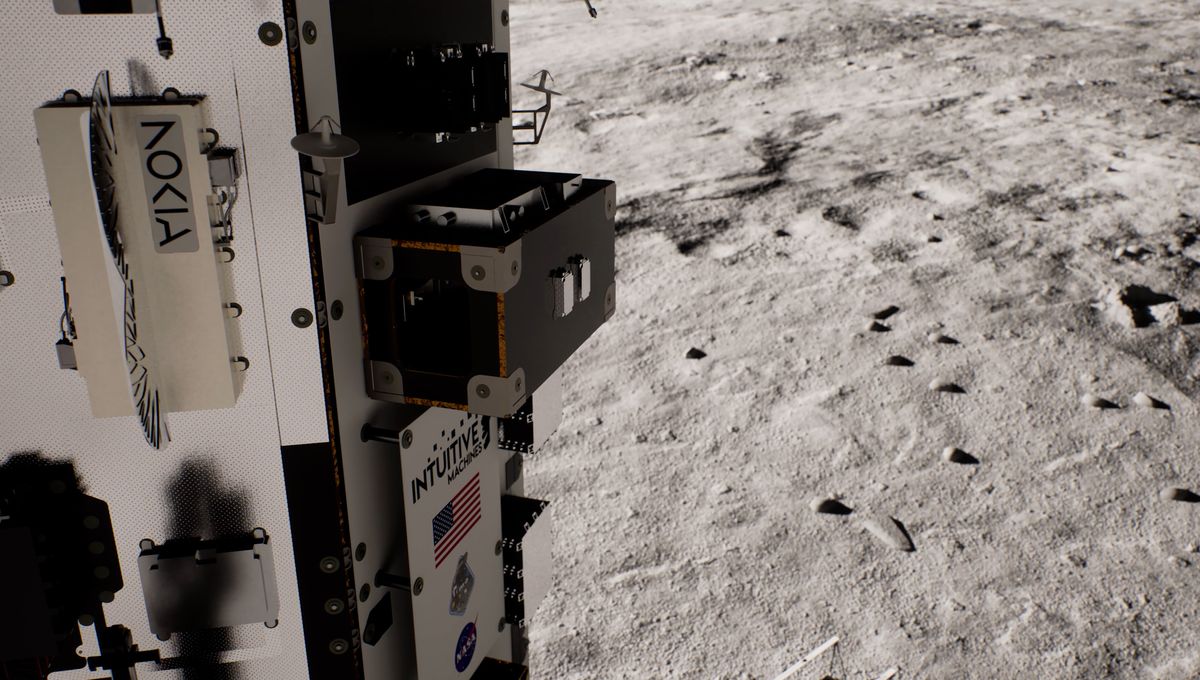
Nokia’s Lunar Surface Communication System, or “LSCS”, has been successfully integrated with Intuitive Machines‘ second mission lander, Athena. Athena is expected to launch next week and its main goal is to measure the presence of lunar water ice. It will have multiple vehicles on board and some of them will use the LSCS to communicate with the lander and send back data and images to Earth.
ADVERTISEMENT GO AD FREE
Athena will land very close to the ridge of the Shackleton crater, a region that is known as a peak of eternal sunshine. The Sun is low on the horizon but it is always visible, never setting, similar to the midnight Sun on Earth. It is the region that is expected to be visited by the Artemis astronauts when the return to the Moon actually happens.
Nokia Bell Labs and NASA have developed a 4G connectivity that is going to work as a network-in-a-box. It will connect the Nova-c lander with the Mobile Autonomous Prospecting Platform (MAPP) – the first rover of company Lunar Outpost – as well as Intuitive Machine’s Micro-Nova Hopper, a lander that will hop about.
“We intend to prove that cellular technologies can provide the reliable, high-capacity and efficient connectivity needed for future crewed and uncrewed missions to the Moon and eventually Mars,” Thierry E. Klein, President of Bell Labs Solutions Research at Nokia, said in a statement. “Cellular technology has irrevocably transformed the way we communicate on Earth. There’s no reason it can’t do the same for communications on other worlds.”
It might seem an easy task to move such a well-established technology on Earth to the Moon – but this is far from the truth. The lunar environment is very harsh, and temperature changes dramatically. At the equator, it can go from 121°C (250°F) in daylight to a nightfall of -133°C (-208°F). In the permanent shadows inside the Shackleton crater, it gets to -246°C (-410°F).
There are also mechanical stressors to consider. The system needs to be launched, fly to the Moon, and land, will all the shaking and forces involved in that. There’s the dangerous lunar soil, made of tiny jagged pieces of rock that can harm many surfaces. Nokia had to consider making it sturdy, while minimizing energy consumption, as well as ensuring reliability. Engineers do not make home calls to check the network on the Moon.
Space is difficult but overcoming the challenges has benefits for Earth. Nokia envisions that all these technological developments for lunar communication can be easily translated to be useful on Earth – which could mean higher quality, more efficient, and more reliable communication devices.
ADVERTISEMENT GO AD FREE
Intuitive Machines had a rough soft landing with their first attempt, making them the first private company ever to successfully land on the Moon. They have made several modifications to the lander to ensure an easier and better landing this time around.
Source Link: For The First Time Ever, The Moon Is About To Get A 4G Cellular Network